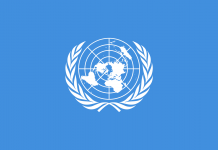This article is written by Sanjana Jain, from Guru Gobind Singh Indraprastha University, Delhi. This article talks about the background, objective and various provisions of the United Nations Security Council Act, 1947.
Table of Contents
Introduction
Amongst the six principal organs of the United Nations (UN), The United Nations Security Council (UNSC) is the second principal organ of the United Nations (UN). Maintenance of international peace and security, recommending the admissions of new UN members in the General Assembly and approving changes to the UN charter are the primary responsibilities of the United Nations Security Council. It has 15 Members, and each one of them has one vote. All the member states have to comply with the decisions of the Security Council.
The Security Council helps to determine the existence of possible acts of aggression or circumstances causing threats to peace. It calls upon the disputing parties to settle their dispute by peaceful means and recommends methods of adjustment. For the purpose of maintaining international peace and security, the Security Council can even impose sanctions or authorize the use of force. It has the authority to issue binding resolutions on member states. After World War II, the Security Council was created in order to address the failed attempt of the League of Nations in maintaining international peace.
Structure and composition
The Security Council was originally composed of 11 members—five permanent members and six non-permanent members elected for a period of two-years. In 1965, an amendment was made to the UN Charter in which the council membership was increased to fifteen, including the above mentioned five permanent members and ten non-permanent members.
Amongst the permanent members, the People’s Republic of China was changed to the Republic of China in 1971, and the Russian Federation had been replaced by the Soviet Union in 1991. The non-permanent members were chosen from different geographic regions, such as one member from Eastern Europe, two members from Latin America, two members from Western Europe, and subsequent 5 members from Africa or Asia. Every year from 10 non-permanent members, 5 would be elected by the General Assembly for a period of 2 years only, and five members would retire each year. Each member holds the presidency alternatively for one month.
Each member country has one vote. The Security Council makes decisions on all procedural matters by an affirmative vote. Substantive matters, such as the investigation of a dispute, also require affirmative votes, including the votes of the five permanent members that are holding veto power.
The composition of the Security Council has always been a controversial matter, particularly since the end of the Cold War. It has been argued by many critics that the 5 permanent members of the Security Council and the Security Council itself are the power structures that existed at the end of World War II when more than half of the world was under colonial rule. With the help of reform efforts, the work of the Security Council has become more transparent.
Any state, whether a member or non-member of the UN can bring a dispute to the Security Council. When the dispute arises, the council sees the possibility of a peaceful resolution. Then the Peacekeeping forces are authorized to keep the disputing parties apart pending further negotiations. If it is observed by the council that there may be a threat to peace, it calls the UN members to apply diplomatic sanctions. If this does not work, then military action can be taken by the Security Council against the offending nation.
Background and creation
The international organizations which had been created before the creation of the United Nation for regulating conflicts between nations, are the International Committee of the Red Cross and the Hague Conventions of 1899 and 1907. After the tragic loss of lives in World War 1, the League of Nations was established to maintain peace and harmony between nations. It successfully resolved many territorial disputes, but it lacked representation of nations under colonial rule and participation of major powers including Japan, US, USSR, and Germany. In 1931, it also lacked against the Japanese invasion of Manchuria, in 1935 against the Second Italo-Ethiopian War, in 1937 against the Japanese occupation of China, and Nazi expansions that escalated into World War II.
The plan for a new world organization began in 1939 under the US State Department. The term ‘United Nations’ was put forth by US President Roosevelt. On New Year’s Day 1942, the United Nations Declaration was signed by the US President Roosevelt, Prime Minister Churchill, Maxim Litvinov, and T.V. Soong of China. When the declaration was signed by 26 governments, it was then the term ‘United Nations’ was started to be used, officially. The four allied countries, the United States, the United Kingdom, the Soviet Union, and China were referred to as “Four Policemen”.
At the Dumbarton Oaks Conference in Washington, the four allied countries met and negotiated about the structure of the UN and the composition of the UN Security Council quickly became the dominant issue. In the conference in Washington, countries like France, the Republic of China, the Soviet Union, the UK, and the US were selected as permanent members of the Security Council, the US also attempted to add Brazil as a sixth member, but the heads of the Soviet and British delegations opposed it. The veto rights of the permanent members of the Security Council were the most controversial issue in the conference. In 1945 at the Yalta Conference, the American, British, and Russian delegates agreed that the permanent members can veto any action by the council, but they can not veto procedural resolutions, which means the debate on a resolution can not be prevented by the permanent members.
In San Francisco in 1995, the UN Conference on International Organization began, which was attended by 50 governments and several non-governmental organizations which helped in drafting the United Nations Charter. At the conference, one of the Australian delegates pushed to restrict the veto power of the Security Council to permanent members only. But his proposal was defeated by a ratio of 20:10 votes.
By the ratification of the Charter by the members (permanent) of the Security Council and also by the majority of 46 signatories, the UN came into existence in 1995. On 17 January, 1946, at Church House, in London, United Kingdom, the Security Council met for the very first time.
Objective and scope of the Act
According to Article 41 of the Charter of the United Nations which has been ratified by the Government of India:
“The security council may decide what measures to be taken to implement its decision, such measures shall not include the employment of armed forces, and it may call the United Nations members to apply such measures. These may include interruption of economic relations, other means of communication, and also severance of diplomatic relations.” Hence, the main object of this Act is to enable the Government of India to effectively implement the measures which the Security Council suggests to put in force.
Important provisions
The United Nations Security Council Act 1947, contains only two sections, though only Section 2 has substantive content.
Section 1 talks about the short title of the Act. Whereas Section 2 talks about the measures under Article 41 of the charter of the United Nations. Section 2 states that if the Security Council under Article 41 of the United Nations Charter signed at San Francisco in 1945 asks the Central Government to apply measure, then in order to give effect to the decision of the council armed forces shall not be used, and the Central Government by publishing the order in the Official Gazette, shall make such provisions as it finds necessary or expedient for implementing measures effectively and without prejudicing the generality of the foregoing power. Also, provisions shall be made for punishing the persons offending against the orders.
Responsibilities and powers of the UNSC
Whenever there is a security crisis in any part of the world, the matter is brought before the United Nations Security Council, which tries to reach an agreement by mediation, by appointing special envoys, or by requesting for the settlement of the dispute to the UN Secretary-General. If it is observed that the dispute keeps on increasing, then the peacekeeping forces and military observers are dispatched. If the circumstances are very serious then financial penalties can be imposed, arms embargoed, and travel bans can also be issued if necessary.
India and United Nations Security Council
The United Nations Security Council, with its primary objective of preserving international peace and security in the world, has always been important for India since its creation. In the San Francisco conference of 1995 itself, India displayed a keen interest in the composition of the security council, especially in the election of non-permanent members. In this conference, India strongly put forward the weightage of factors such as population, industrial potential, capacity to contribute to international peace and security, and the desire or need of various states to be selected for the membership of the Security Council.
India has been elected seven times as a non-permanent member of the Security Council, the year 2011-2012 was the last time when India was chosen as a non-permanent member of the Security Council. India on every occasion held the seat on behalf of the Asian group except when India set aside the seat for the commonwealth group. In 2011-12 India showed its electoral popularity by winning the non-permanent member seat of the security council with the majority of votes in the General Assembly. This had been compared to the situation in 1966 when India had lost the non-permanent seat to japan by a wide margin.
Indian preferences in the United Nations Security Council have always been to adopt broadly accepted decisions and resolutions. After analyzing all the terms of India in the Security Council, it has been pointed out that India joined 59% of the adopted resolutions either unanimously or without a vote. Significantly, there are not many occasions in which India stood aside without joining the majority, and has not voted for any resolutions, it resorted to no vote only to express its reservation. India has never been a loner in not voting as it always had the company of other council members. Thus, India’s behavior here points out its efforts in displaying a constructive, rule of law and a majority building State in a global, multilateral setting like the Security Council.
Reforms in Security Council
The United Nations Security Council must adapt, reform and expand its membership to include underrepresented regions, particularly Africa, to meet the emerging challenges of international peace and security. The permanent members of the Security Council have always escaped from the investigation of this issue, despite the importance of reforms in the Security Council and always directed susceptibilities more towards the reform of the other sections of the organization. Although the end of the cold war had made the reform of the Security Council unavoidable and necessary, the political ambiguity at the international level has complicated the issue of the reform in the Security Council.
Critical analysis
To ensure “prompt and effective action”, the Security Council was created as a limited membership body. The membership of the Security Council was divided into two categories of membership i.e permanent and non-permanent. Article 23 of the Charter names the five members state as permanent members of the council, but the criteria for getting this permanent membership remains conspicuous by its absence. The seats for non-permanent members increased from 6 to 11 by a 1963 Charter amendment that became effective from 1st January, 1966. The Charter did not mention any criteria for the election of permanent members of the council but provided two-part criteria for the election of non-permanent members i.e contribution in maintaining peace and security around the world and equitable geographic distribution. The non-permanent members are elected only for a term of two years. Also, Article 23 of the charter disallows the immediate re-election of retiring members.
Conclusion
The main aim of the United Nations Security Council was to maintain international peace and security around the world and to prevent the war among the countries. The reason behind the establishment of the United Nations was to save the world from world war 3.Thus, the United Nation Security Council Act was adopted in 1947 for enabling the Government of India to implement effectively the measures which the Security Council suggested to put in force.
References
- https://www.un.org/securitycouncil/
- https://www.un.org/securitycouncil/content/what-security-council
- http://legislative.gov.in/actsofparliamentfromtheyear/united-nations-security-council-act-1947
LawSikho has created a telegram group for exchanging legal knowledge, referrals and various opportunities. You can click on this link and join:












